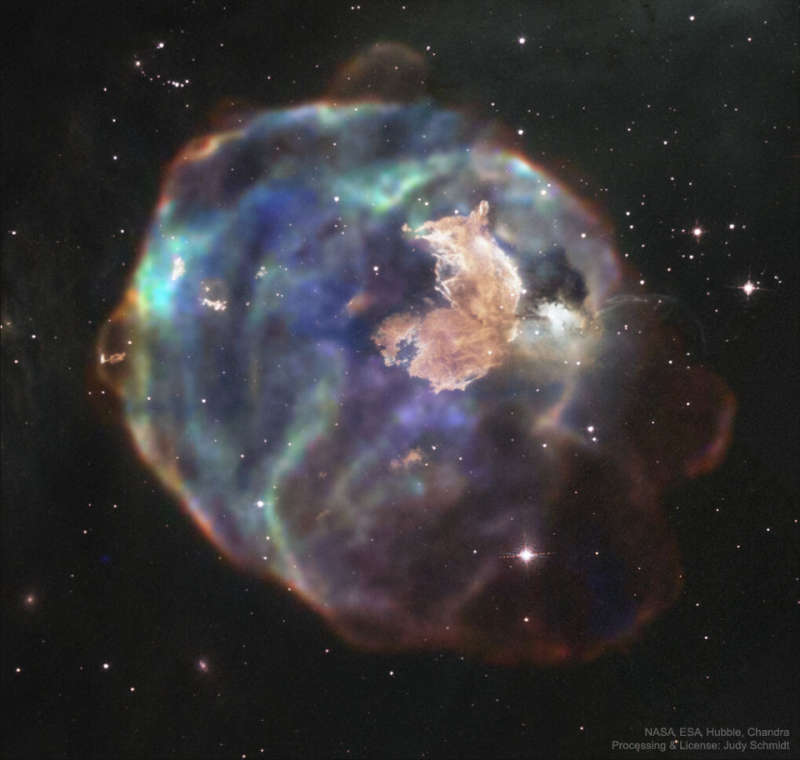N63A: Supernova Remnant in Visible and X-ray

Explanation:
What has this supernova left behind?
As little as 2,000 years ago, light from a massive stellar explosion in the
Large Magellanic Cloud
(LMC) first reached planet Earth.
The
LMC is a close galactic neighbor of our
Milky Way Galaxy and the rampaging
explosion
front is now seen moving out - destroying or displacing
ambient gas clouds while leaving behind relatively dense
knots of gas and dust.
What remains is one of the largest
supernova remnants in the
LMC: N63A.
Many of the surviving dense
knots have been themselves compressed and may further
contract to form new stars.
Some of the resulting stars may then explode in a
supernova,
continuing the cycle.
Featured here is a combined image of N63A in the
X-ray from the
Chandra Space Telescope and in
visible light by
Hubble.
The prominent knot of gas and dust on the upper right -- informally dubbed the
Firefox -- is very bright in visible light, while the
larger supernova remnant shines most brightly in X-rays.
N63A spans over 25
light years and lies about 150,000 light years away
toward the southern
constellation
of Dorado.
Authors & editors:
Robert Nemiroff
(MTU) &
Jerry Bonnell
(USRA)
NASA Web Site Statements, Warnings,
and Disclaimers
NASA Official: Jay Norris.
Specific
rights apply.
A service of:
LHEA at
NASA /
GSFC
& Michigan Tech. U.

